| Hideto Fukui (250mm Dall Kirkham, Philips ToUcam Pro) |
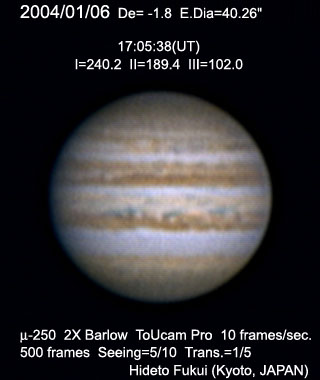
[Hideto.Fukui (Kyoto City Japan)] ≪京都府 京都市 福井英人≫
| Hideto Fukui (250mm Dall Kirkham, Philips ToUcam Pro) |

[Hideto.Fukui (Kyoto City Japan)] ≪京都府 京都市 福井英人≫
| Satoshi Ota (319mm Newtonian, Qcam pro4000) |
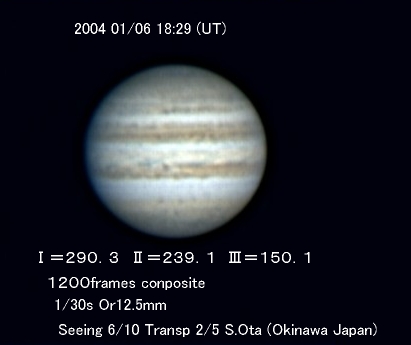
[Tomigusuku city Okinawa Japan] ≪沖縄県 豊見城市 大田 聡≫
| Kuniaki Horikawa(160mm Newtonian, Drawing & ToUcam PRO) |

[Horikawa_J20040106-1624_drw.jpg] 2004/01/06 16h24m(UT) I=215.1 II=164.5 Seeing=6-7/10 Transparency=1-3/5 16cm Refl. x200 ・mid-SEB outbreak後端は明瞭 ・BAは周囲が薄暗く捉えやすいが、透明度低下のためCMTは取れなかった
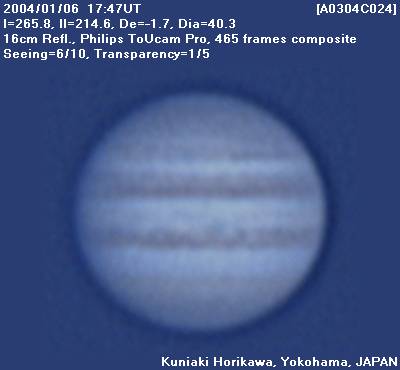
[Horikawa_J20040106-1747_img.jpg] 2004/01/06 17h47m(UT) I=265.8 II=214.6 De=-1.7 Dia=40.3 Seeing=6/10 Transparency=1/5 16cm Refl. x143 Philips ToUcam Pro 465 frames composite ≪神奈川県横浜市泉区 堀川邦昭≫
| Fattinnanzi Cristian ( 250mm Newtonian Philips Vesta Pro) |

[Fattinnanzi Cristian : Macerata ITALY]
| Paulo Casquinha ( 200mm f/5 Newton Reflector Toucam Pro) |
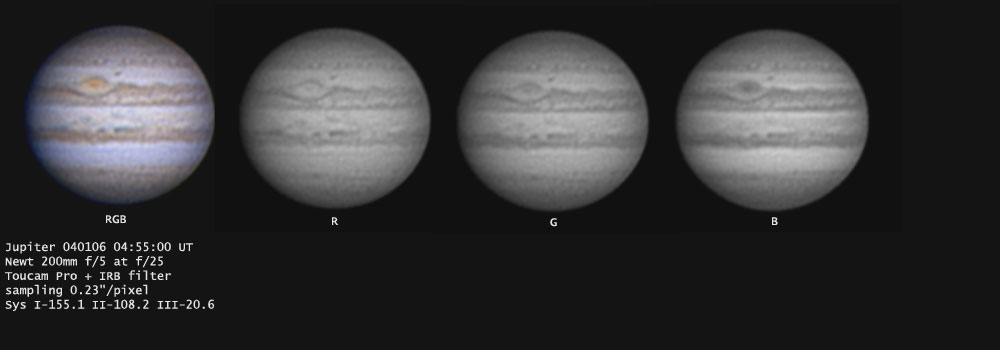
| Antonio Cidadao (250mm LX200SCT : FLICM7 1E CCD camera) |
Here is Jan6 data, obtained under a bit better seeing. Notice that the SSTB methane-bright area just following the GRS corresponts to the diffuse oval between the two smal spots visible in broadband IR and not to the spots themselves. Also notice that I include IR data from two filters (700 and 830nm). As for the Saturn globe, these filters produce different results, and those having them may find interesting to make image ratios from registered images. In jupiter, for instance, the higher latitudes are considerably darker in the raws.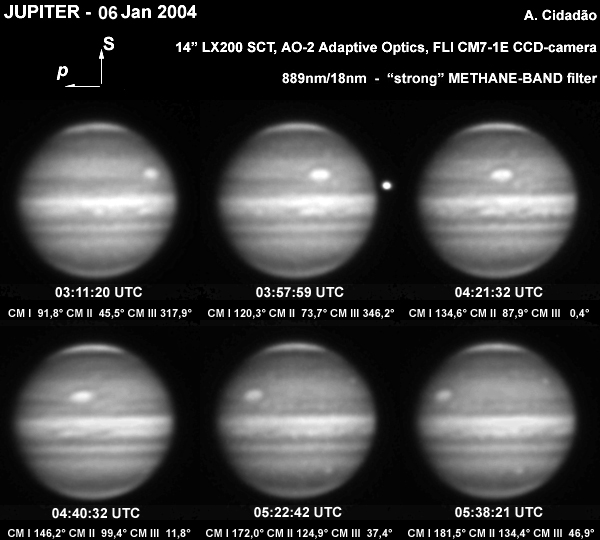
Here is the jan06 methane time-lapse animation produced by the bias, dark and flat corrected raws of the processed images previously sent.
≪アントニオ シダダオ ポルトガル≫ [Antonio Cidadao Oeiras - Portugal]
 ALPO-Japan Latest
ALPO-Japan Latest

 Jupiter Section
Jupiter Section